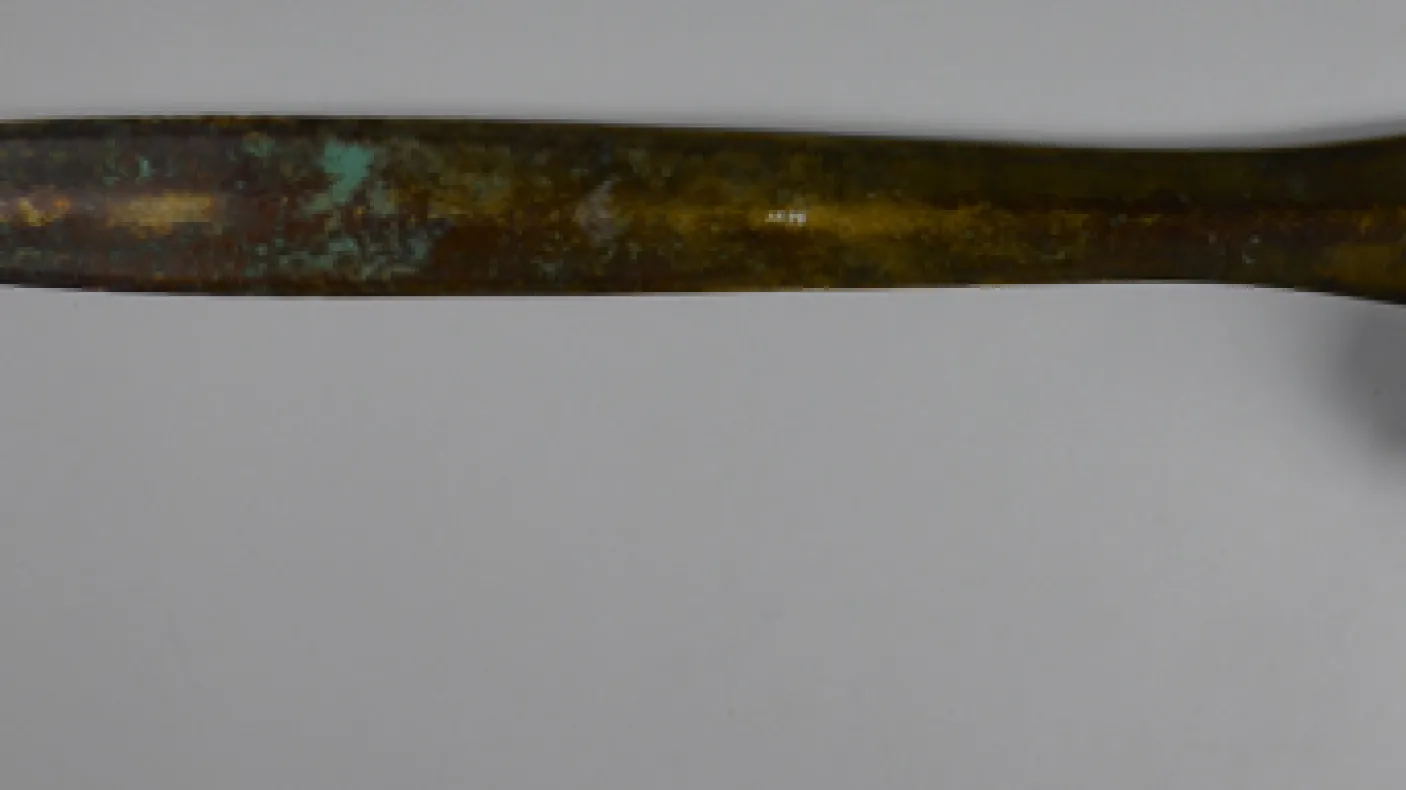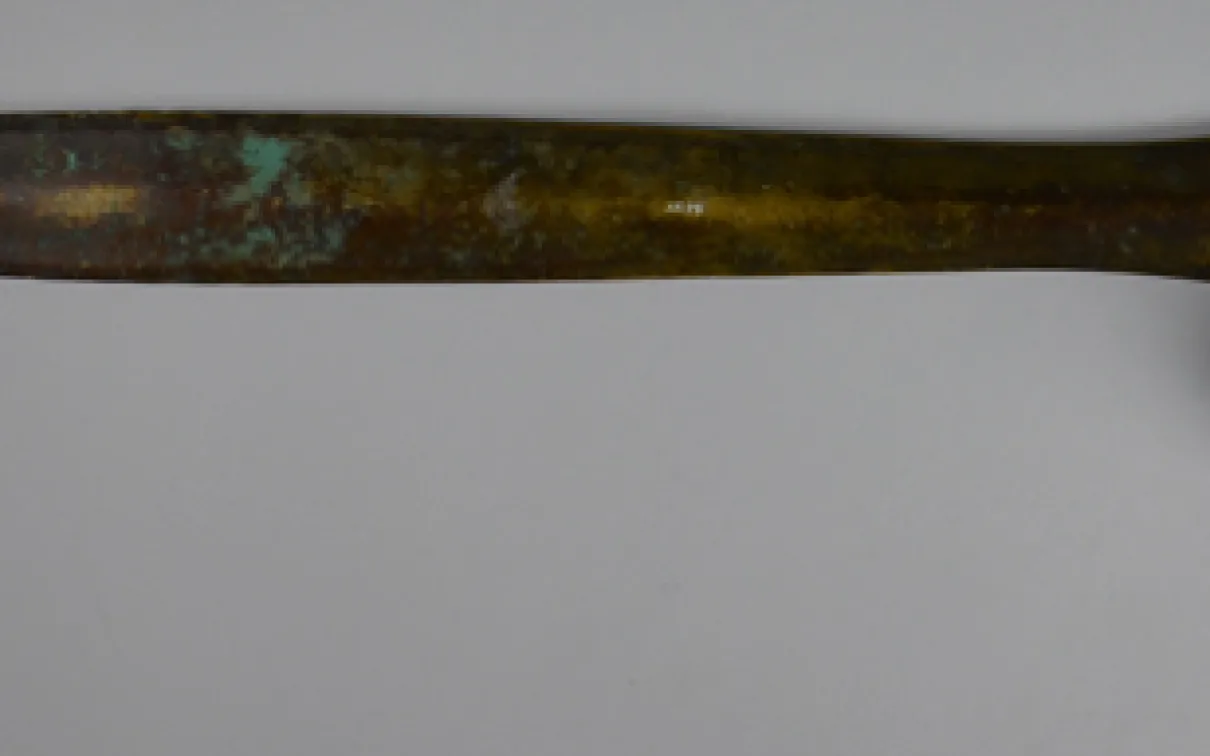Weapon Wednesday: The Long History of an Irish Bronze Age Sword
Published
Categories
Author
Blog Post
A bronze sword in the ROM's collection (ROM no.909.68.1) has an interesting history. It is of a type named after Ewart Park, a site in Northumberland in Northern England. The type seems to have developed in what is now Northern England, and became the main sword type of the Late Bronze Age of Britain and Ireland (circa 1000 to 700 BC). In his great work on the Bronze Age Swords of Ireland, George Eogan classified this as his Class 4 of Bronze Age Swords, associated with the Dowris Phase, named after a hoard of objects found at the site of Dowris in County Offaly. These swords are designed for slashing at an opponent, with the edges meant to be sharp for cutting through flesh, not for hacking at armour. Studies of the edge damage tend to not provide evidence of Hollywood-style sword clashing, but a capable use of the sword to deflect blows as is known from Mediaeval sword-fighting treatises, showing that these warriors had a form of martial arts as well-developed as the skills of the manufacturers of the swords themselves.

Detail of the sword. Note the general Bronze Age patina, including the two impacts on the edge, and the later polish from being used in the 18th century (photo by Kay Sunahara)
Chemical analysis of the ROM sword shows that it is made of 91.3% copper, 7.5% tin, 1% lead, and other elements making up the remainder, like silver, arsenic and antimony. Copper would have been available in Ireland, and tin could have been available from Cornwall. Studies of swords of this period in Britain and Ireland show that there was a lot of contact, and swords could be melted down and the materials re-used anywhere in the region. Earlier in the European Bronze Age swords were often made by pouring molten bronze into a mould made of stone, but in the Late Bronze Age it was typical to make the form of the sword in wood, and make two halves of the mould by laying slabs of clay along the wooden form. Impressions of wood grain have been found on the moulds that have been preserved. Fragments of a number of these moulds have been found in Ireland, probably or certainly made for this type of sword. At times there were problems with the casting of the sword, and molten bronze would be poured onto the object; or repairs would be made by "fixing" the blade with wax, making another mould, melting the wax, and pouring molten bronze into the void. This sword seems to have a couple of these problems. What appears to be a blow-holes or voids in the blade itself were filled with bronze, and then ground down to be flush with the blade. The hilt seems to have had a poor cast, or perhaps became cracked, and molten bronze seems to have been poured over the hilt, but was left as it was at it was to be covered by the grip.
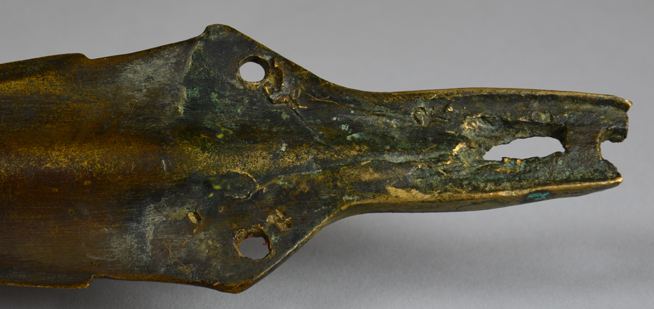
Detail of the hilt showing where bronze was poured on to strengthen a poor cast or a crack (photo by Kay Sunahara).
After spurs from the casting had been removed, the sword would have been annealed (heated to a high temperature to soften the metal) and hammered. Unike iron or steel, studies have shown that bronze should not be worked, or forged, when it is hot, as this creates severe problems. Instead, the metal would have been annealed and then cold-hammered, probably repeatedly. Then the grip, made of materials such as wood or bone, would be riveted on and the final grinding and polishing would create the final product. The sword has a patina, the fine surficial oxidization of the bronze surface, that dates to about the time of the sword's first use. Features included in this original patina are the fine scratches of the blades original polishing and grinding, a couple of impacts on the edge, and what appears to be a massive blow to one side that slightly bent the sword. Former ROM curator Francis Pryor, who wrote a catalogue of the ROM's British and Irish Prehistoric bronzes, subsequently excavated a Bronze Age site in England called Flag Fen, and he says that several swords deposited in the marshes there were similarly struck on a rock. Possibly the sword was "sacrificed" to make it useable in the Afterlife. The sword was probably used, and had a life in the Late Bronze Age, wielded by a warrior of that time, and then was very probably "sacrificed" in a body of water like those at Flag Fen. Of the over 600 Bronze Age swords found in Ireland, the majority seem to have been found in contexts that would have been bog or stream in the Late Bronze Age, a practice found across Europe for at least another thousand years. Now and in the recent past the old bogs would have been dry, with just the peatier soil showing archaeologists what would have once been standing water, but to this day these swords are found by deep ploughing of what is now peaty soil.
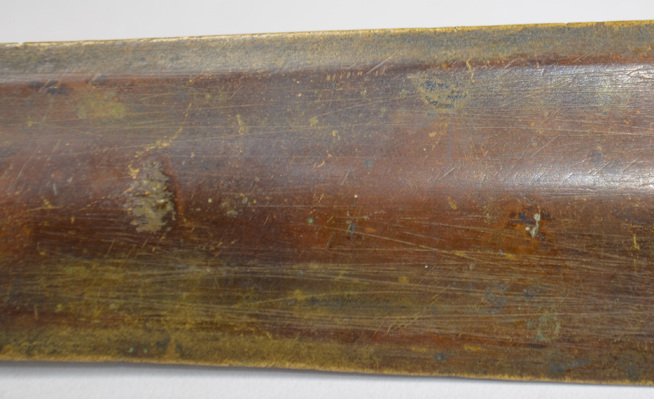
Detail of the blade with possible in-filled blow-holes, a massive ancient impact on the side (possibly from being hit against a rock?), and scratches and polishing from use in the 18th century (photo by Kay Sunahara).
Apart from the Late Bronze Age patina, the sword shows other signs of use which indicate the object was used relatively recently, and when the ROM acquired it, the sword had been refitted with a handle. The handle seems to be made of rawhide, riveted on with iron, and has a curve. If the curve is meant as a finger-guard, that would give the re-used object a side. The recent signs of use are all around the edge, making the sword now completely blunt, especially on what would be the front or lead side if the curve in the grip was to protect the fingers. There is also a fine but uneven polish that looks as though it was made by the sword being worn thrust into a belt, and the owner's clothing would have polished the sword for some time. Apparently this was not uncommon, but what is uncommon about this object is that we may know more about the more recent owner of the sword.
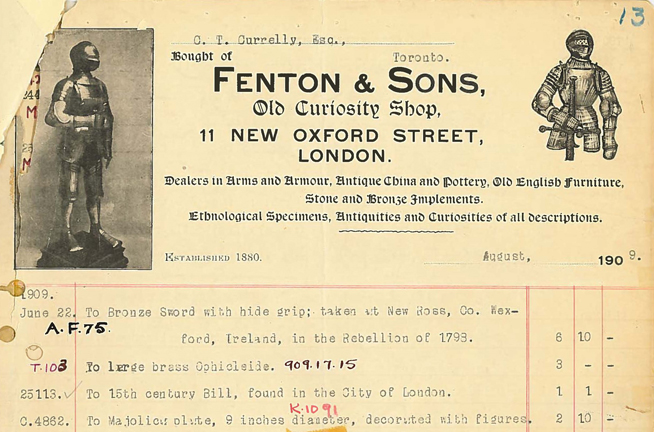
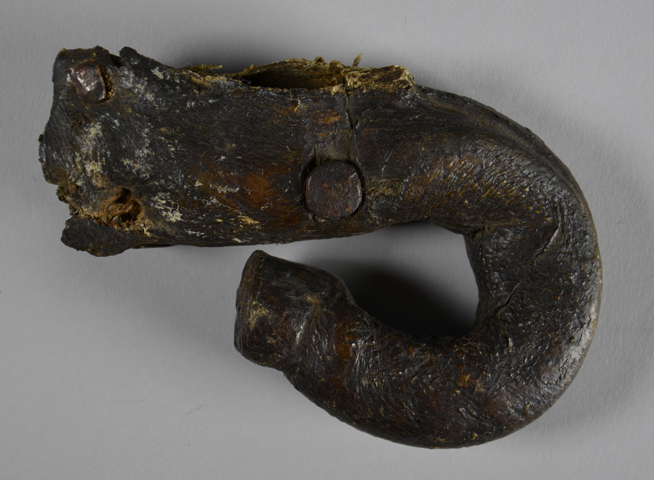
Further reading:
George Eogan, 1964, "The later Bronze Age in Ireland in the light of recent research," Proceedings of the Prehistoric Society, New Series XXX: 268-351.
George Eogan, 1965, "Catalogue of Irish Bronze Swords," National Museum of Ireland.
Simon Ó Faoláin and J. P. Northover, 1998, "The Technology of Late Bronze Age Sword Production in Ireland," The Journal of Irish Archaeology, IX: 69-88.
Barry P.C. Molloy, 2007, "What’s the bloody point: Swordsmanship in Bronze Age Ireland and Britain," in "The Cutting Edge: Archaeological Studies in Combat and Weaponry" (edited by B.P.C Molloy) The History Press Ltd.
Francis Pryor, 1980, "A Catalogue of the British and Irish Prehistoric Bronzes in the Royal Ontario Museum," Royal Ontario Museum, Toronto.
